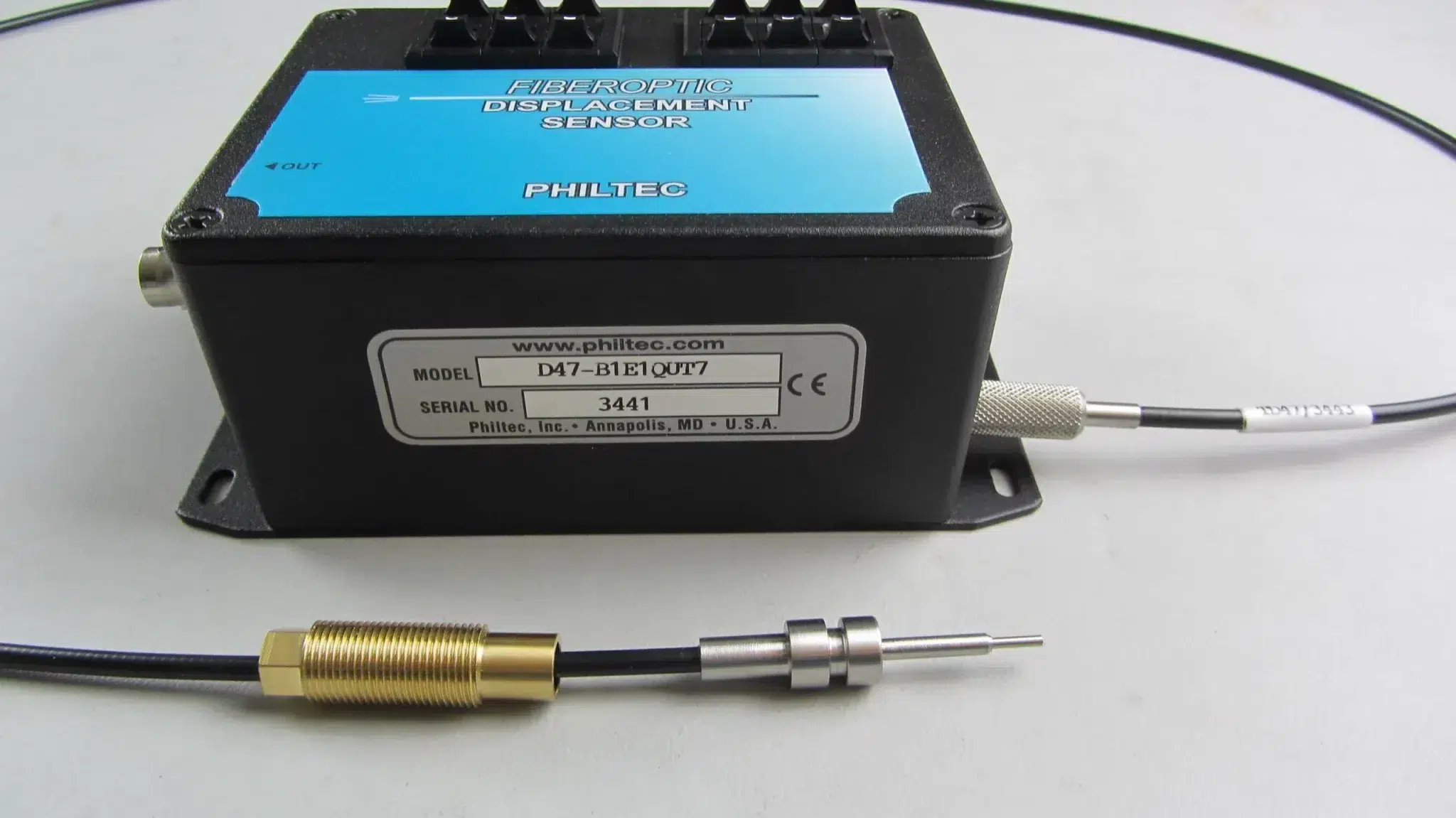Fiberoptic Sensors for Non-contact Measurement of Linear Distance, Displacement and Vibration
Glass fibers with a light beam width of 25°, 30° and 66° are used to manufacture Philtec sensors.
The narrower beams give longer ranges. The standard cable length is 90 cm.
25° fibers can be used in continuous lengths up to 3 meters.
30° fibers can be used for continuous lengths up to 9 meters.
66° fibers can be used for continuous lengths of up to 15 meters.
All sensors can be manufactured according to customer specifications.
Fiber-optic sensors for distance measurement and vibration measurement work without contact and are a favorable alternative for measurements in production engineering. Typical applications are here, for example:

- Motion detection of the actuators
- Vibration in the ball bearing
- Deflection of the membrane
- Distance measurement in liquid
- Dynamic inspection on the fuel injector
- Penetration study and stroke study
- Positioning of parts
- Vibration investigation on the piezocrystal
- Piston Position Detection (TDC)
- piston travel
- Detecting scratches
- servo control
- Coil deflection
- speed measurement
- Measurement of structural deformation
- Recording the surface quality
- Vibration measurement on the turbine blade
- Measuring the vibration in the ultrasonic range
- Control of the process in a vacuum
- Valve characteristic measurement and valve lift measurement
- Automatic parts inspection
- Bearing / shaft dynamic measurement
- Commutator profile
- Computer hard disk mounting
- deformation study
- Distance to glass
- Distance to paper
- Distance to plastic
- Dynamic expansion
- Disk thickness
- process control
- Out of roundness
- Shaft orbit
- Detection for structural deformationg
- Measuring the surface quality
- Elongation and vibration of the turbine blade
- ultrasonic vibration
- Application in ultra-high vacuum
- vibration analysis
- Structure twist
- Electronics with analog and digital output